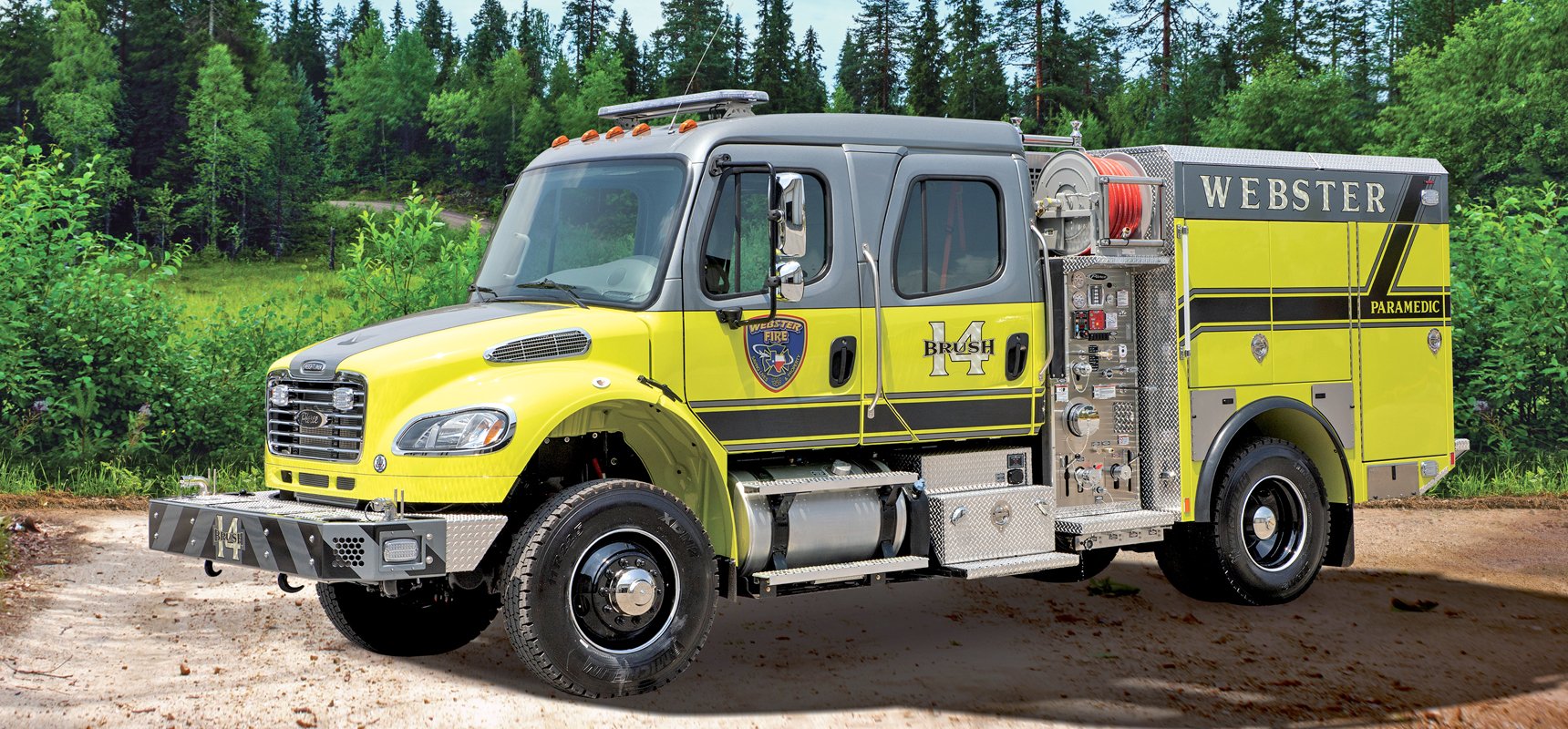
The wildland urban interface fire truck has been developed over the course of many years, listening to the needs and configuration requests of fire departments across North America.
A fire truck designed with the structural firefighting and storage capabilities of a Type 1 engine, combined with the sleek maneuverability and water capacity of a Type 3 engine, may seem like a combination of opposites; but together, it provides highly-valued emergency response capabilities.
Why is the demand growing for this type of engine and what are the most critical design features a fire department should include on a wildland urban interface (WUI) apparatus? Keep reading to learn more.
What Is a Wildland Urban Interface (WUI) Fire Truck?
What does wildland urban interface mean?
The U.S Fire Administration defines the term as “an area where human made structures and infrastructure (e.g., cell towers, schools, water supply facilities, etc.) are in or adjacent to areas prone to wildfire.”
This type of terrain describes many sprawling urban areas, where populations spread out beyond the city limits and border wildlife areas. In fact, many new communities are built specifically because of the close proximity to state and national parks and natural settings.
But the desire to be close to nature brings firefighting challenges. As a result, a new type of truck to support this unique wild and urban environment is required.
Why is a Special Type of Truck Required for Wildland-Urban Scenarios?
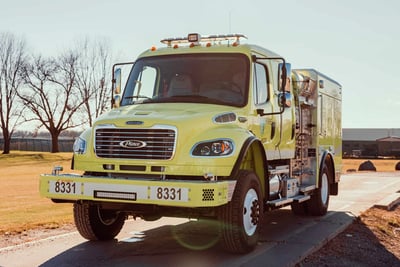 In the past, wildland firefighting called for a Type 3 fire truck with standard 500-gallon water capacity and excellent off-road capabilities. A typical wildland or brush fire truck often features four-wheel drive, a complete fire suppression package and exceptional angle of approach and angle of departure capabilities.
In the past, wildland firefighting called for a Type 3 fire truck with standard 500-gallon water capacity and excellent off-road capabilities. A typical wildland or brush fire truck often features four-wheel drive, a complete fire suppression package and exceptional angle of approach and angle of departure capabilities.
These attributes are impressive and work well for wildland settings. But now, these traditional remote and extremely rural settings have out-buildings, cell towers, vacation homes, attractions and new communities set right in the heart of natural vegetation.
Combining the attributes from a Type 1 and Type 3 fire truck emerged as the best way to manage new wildland urban interface areas. A WUI truck features an impressive array of attributes, discussed in detail below.
What Are the Key Design Features of a WUI Fire Truck?
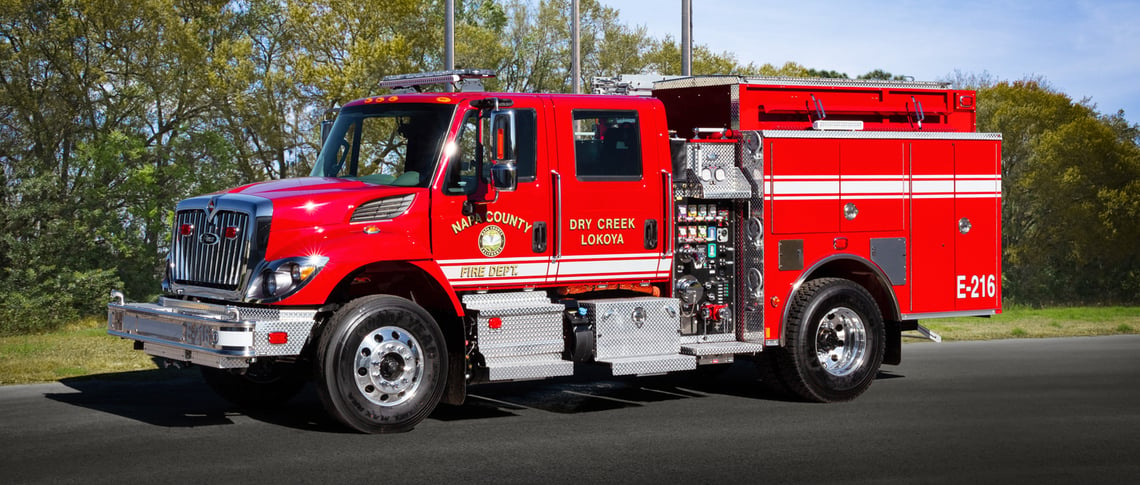 To successfully manage both structural and wildland fire scenarios, a WUI fire truck often features very specific design details.
To successfully manage both structural and wildland fire scenarios, a WUI fire truck often features very specific design details.
#1. Increased Maneuverability
The base configuration of a wildland urban interface fire truck is designed to maximize maneuverability. WUI trucks often feature a shorter wheelbase that allows for a greater ability to tactically traverse through variable terrain.
#2. A Focus on Angle of Approach and Departure
The angle of approach and departure is another key feature of WUI apparatus. As a truck moves from an on-road to an off-road environment, it is important that the angle of approach can be made smoothly while maintaining vehicle stability and control. Both critical angles ensure that as a vehicle meets a slope, enters a ditch or comes back from an off-road environment, the vehicle does not meet any ground interference and cause damage to the vehicle.
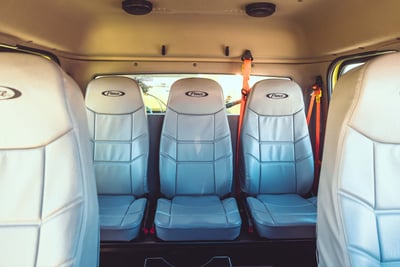 #3. Configured to Comfortably Seat More Firefighters
#3. Configured to Comfortably Seat More Firefighters
A wildland urban fire truck is often designed to carry four to five firefighters. The cab is configured to be spacious to maximize comfort for personnel who may be in the cab for long periods of time as they work in remote natural environments.
#4. Prepared to Manage Rough Terrain
Wildland urban interface fire trucks feature options for all-wheel drive, 4-wheel drive, front winches and traction tires to maximize control on rough and variable terrain.
#5. Power-Take-Off Pump and Pump-and-Roll
WUI trucks have main pumps that range from 500 gpm up to 1500 gpm with auxiliary pumps for pump-and-roll operations. These auxiliary pumps are driven by separate hydraulic pumps on Tier 4 diesel powered engines. This allows the vehicle to remain in motion while fighting fire simultaneously.
In wildland urban interface scenarios, the fire is moving along with the weather and wind. As a result, it is not uncommon for a truck operator to drive the truck while crew members man the pump and hoses walking beside the moving vehicle. This is critical as crews make firelines to prevent fire from spreading or hitting structures in the path of a moving wildfire. In addition, the pump-and-roll technique is used to help wet down areas or extinguish brush fires in roadside ditches.
#6. An Auxiliary Pump is Always Included
The benefit of having an auxiliary pump is that the driver is moving the vehicle and increasing the throttle (or RPM) on the vehicle engine, while not affecting the pressure being generated by the auxiliary pump. The separate engine, or hydraulic pump, driving the auxiliary pump maintains the set pressure resulting in no pressure spikes in any handlines in operation.
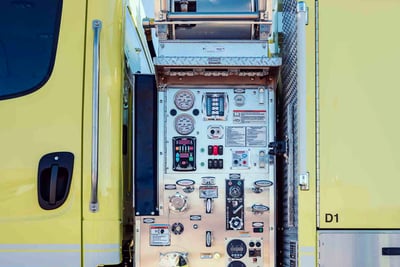
#7. More Water Capacity
On a standard Type 3 wildland fire truck, the traditional water capacity is often 500 gallons with an additional 20 gallons of fire suppression foam. To support wildland urban interface areas, many trucks are designed to carry more water, often 500-1000 gallons of water in the WUI configuration. This is critical to support structural firefighting needs and to be prepared for more rural settings where tender apparatus and fire hydrants are not readily available.
#8. Firefighting Foam to Promote Water Use Reduction
The vast majority of WUI fire trucks are configured with a foam system to increase the fire suppression capability on the truck. Firefighting foam is designed to improve the fire-extinguishing capabilities of water and enhance on-scene efficiencies. Most importantly, foam systems can help promote water use reduction, which is critical in rural and wildland environments where access to water can be a major concern.
#9. Additional Hatch Storage
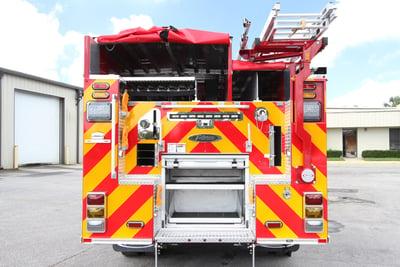 An additional design feature of a WUI fire truck is the enhanced storage capabilities in the body.
An additional design feature of a WUI fire truck is the enhanced storage capabilities in the body.
Increased storage capacity on WUI trucks is usually in the form of hatch storage to keep gear and equipment dry. In many circumstances, extra firefighting gear is required based on the unique needs of an emergency scene. WUI trucks support both structural and wildland fires, so extra gear is often required on hand to manage changes in firefighting needs to support each fire type.
#10. Unique Ladder Complement
One design feature that is quite unique to wildland urban interface fire trucks is the inclusion of ground ladders. A WUI apparatus includes the full NFPA 1900 ladder complement, often stored on the top of the truck to maximize storage space. In addition, many WUI trucks include a hydraulic ladder rack to aid in the storage of, and access to, the ladders.
#11 Several Hose Capacities and Size Options
Many WUI trucks contain multiple hoses to manage the variety of emergency scenarios firefighters may encounter. WUI fire trucks tend to have larger requirements for discharge and suction hoses that lean more towards what one might see in a Type 1 or traditional engine, with 2½-inch lines and 4-inch large diameter hoses.
For a fire department looking to invest in a wildland urban interface fire truck, there are many design and configuration considerations. However, the most important part of the process is to work with your wildland fire truck manufacturer to determine the unique needs of your fire department and ensure the truck features appropriately match your application and environment.
Contact your local Pierce dealer to learn how to get the process started.
What design characteristics do you value most in your WUI truck? Share in the comments below!